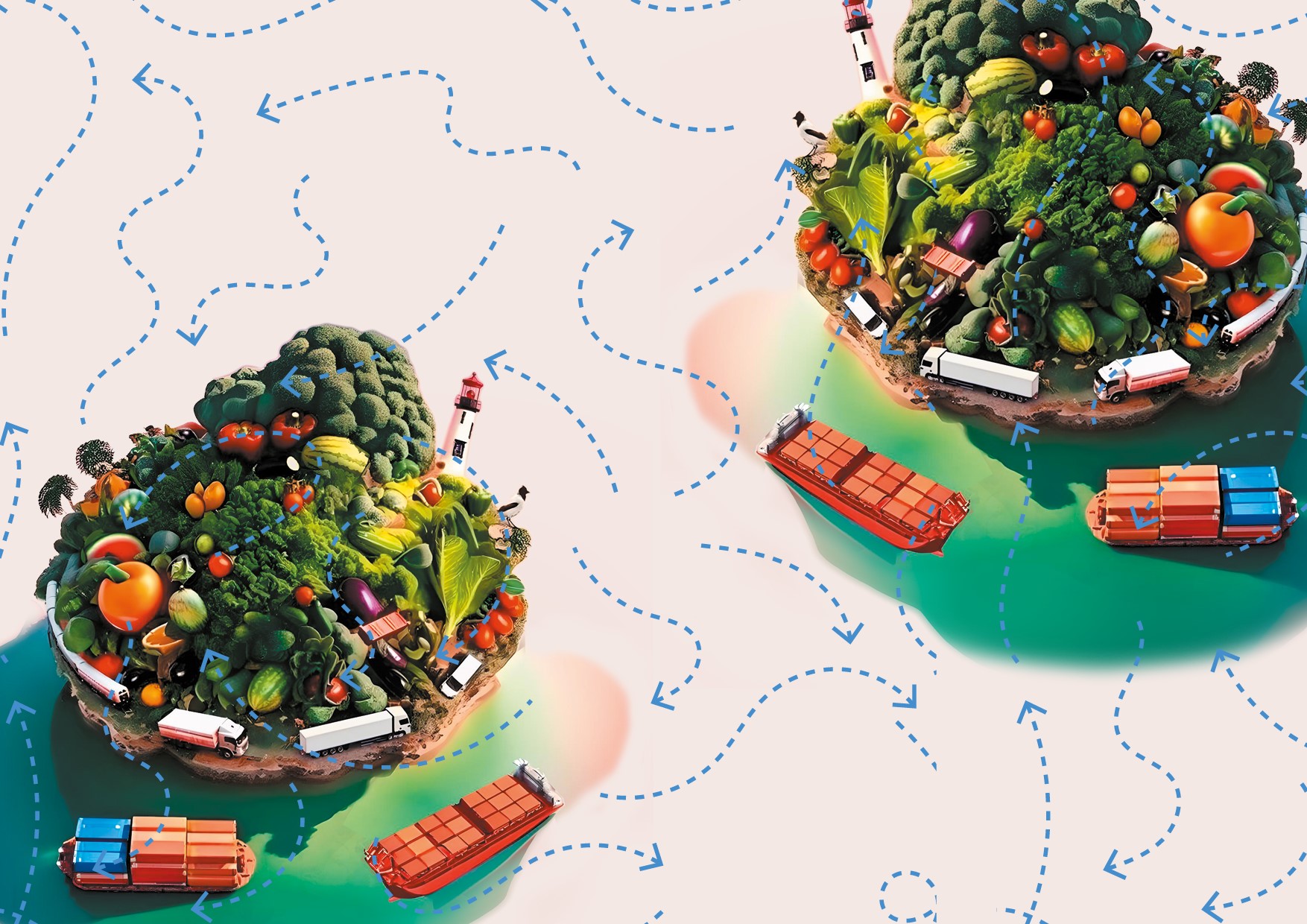5 reasons for intermodality fruit and vegetables transport
Currently, refrigerated lorries are still the most widely used international transport (97% of cases for fruit and vegetables) due to the good preservation of perishable goods. The combination of flexibility, speed, transparency and ease of use make this mode of transport a difficult mode of transport to compete with.
However, there is an upward trend in its cost due to the limitations that are being imposed on its transit, and regardless of fluctuations in the price of fuel. In an international transaction, transport can account for between 20% and 30% of the total cost, being the most relevant concept after discounting the labour included in the different phases of the process. This demonstrates the urgent need to look for alternatives or complements for the transit of this type of goods.
Another point to bear in mind is competition. The most direct, in the case of fruit and vegetables, is Morocco, which already enjoys a good connection. Through Algeciras or the Tangier Med connection, Moroccan produce can take advantage of the central high-speed rail corridor, something the Southeast of Spain cannot do because the Mediterranean Corridor lacks a high-speed rail link.
Hence, intermodality, understood as the combination of lorries with alternative modes (short sea shipping or train) is configured as a solution to the saturation of road transport, and given the palpable delay in rail connections, the intermodal option, with priority given to maritime transport, is the most feasible alternative, in the short term, to open up the logistical possibilities for this area.
Within this framework, the project “Adaptation of intermodal transport of perishable goods within an intelligent supply chain”, financed with FEDER funds-University of Almeria and the Regional Ministry of Technological Innovation, Industry, Knowledge and Universities (Andalusian Regional Government), carried out a survey in 2022 of members of the fruit and vegetable supply chain with interesting results.
Conclusions
The survey showed that operators are not clear that intermodal transport guarantees the quality of the product at destination, but neither does it guarantee on-time delivery. There is a majority response regarding the environmental benefit and the possible cost savings, as well as the fact that transit time is much more relevant than cost when it comes to shipping goods.
Secondly, most of the operators consulted stated that consumers believe that long-distance transport is harmful to the environment and that they prefer local or proximity products. On the other hand, it is thought that there is a certain customer who values long-distance transport (import) because it favours greater choice and lowers prices. And although consumers demand information on the sustainability of the fruit and vegetables they buy, including the type of transport, for the moment, however, the dominant purchasing factor is still price, much more so than the environmental impact of transport.
Thirdly, there is consensus that intermodality in fruit and vegetables would be facilitated by increased communication/planning between supplier-customer. Also that new technologies applied to intermodal transport (blockchain, real-time traceability, market intelligence systems, improved estimates) would help to reduce transit time and maintain quality at destination, and even reduce the cost of the service.
Fourthly, a positive aspect would be the creation of intermodal fruit and vegetable redistribution centres that could improve the service provided to the consumer, for example, by maintaining stability and product assortment on the shelves, but also by reducing waste or complaints at destination.
And fifthly, and in conclusion, the survey showed that companies in the fruit and vegetable supply chain are more confident about the possible technological revolution in road transport than about adopting a modal shift. Despite some interest, there is not yet a clear willingness to adopt. The use of redistribution centres at destination in combination with intermodality, on certain routes, could be a first step towards change.



